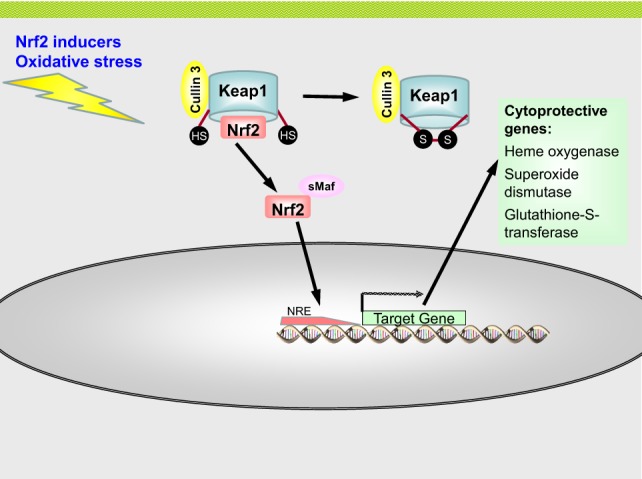Figure 7.

The Nrf2–ARE pathway. Nrf2 is sequestered in the cytoplasm by Keap1 and targeted for ubiquitination by Cullin 3 and proteasomal degradation. Under conditions of oxidative stress or by chemical activators the thiol groups of cysteine residues of Keap1 are oxidized. This leads to the formation of disulfide bridges, which changes the conformation of Keap1 which is unable to bind Nrf2 now. Nrf2 is no released from Keap1 and translocates to the nucleus by forming heterodimers with sMaf proteins. In the nucleus, the Nrf2–sMaf complex binds to antioxidant responsive element (ARE) sequence in the promoter region of Nrf2 target genes, leading to the expression of antioxidative enzymes, such as heme oxygenase, superoxide dismutase, and glutathione-S-transferase.
